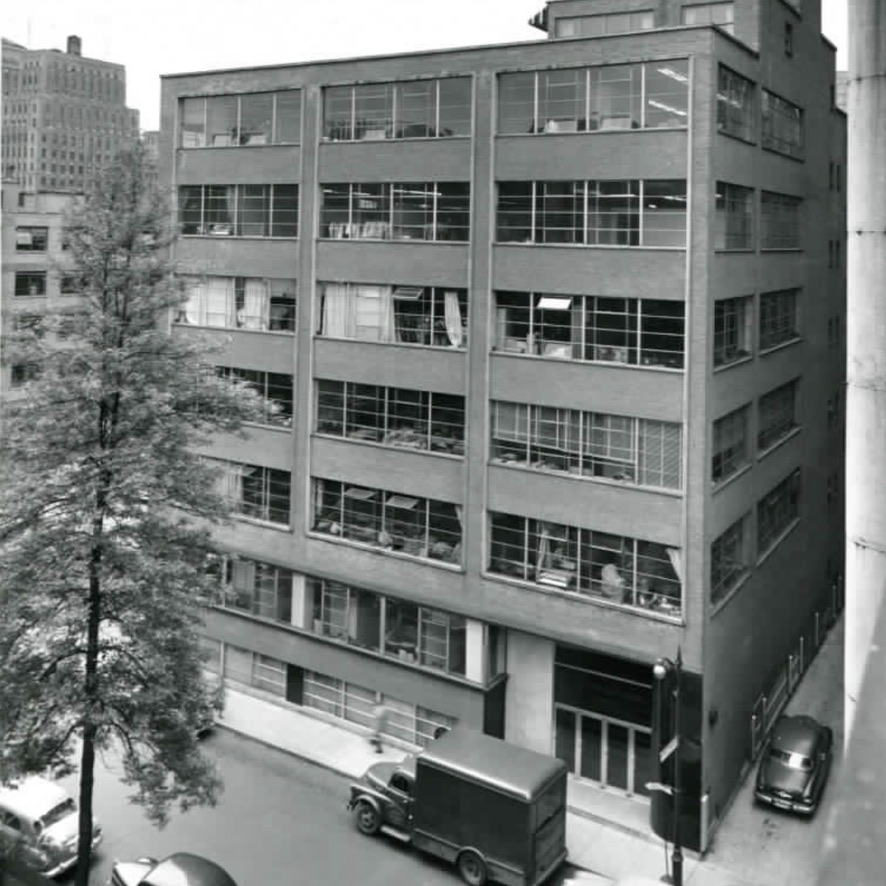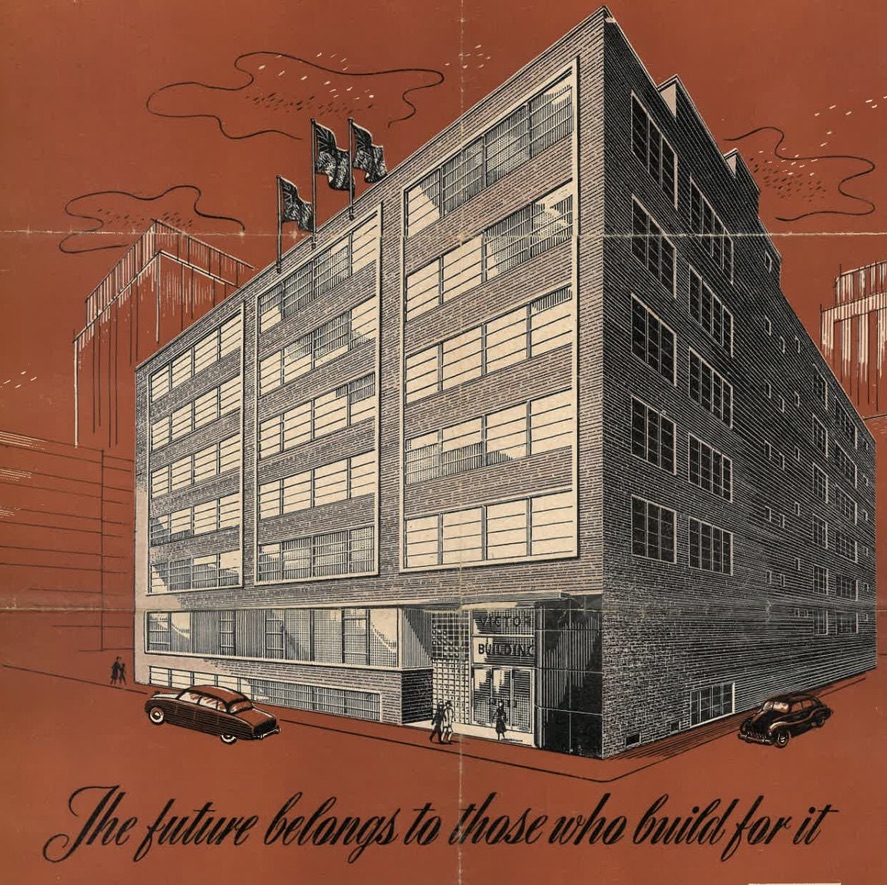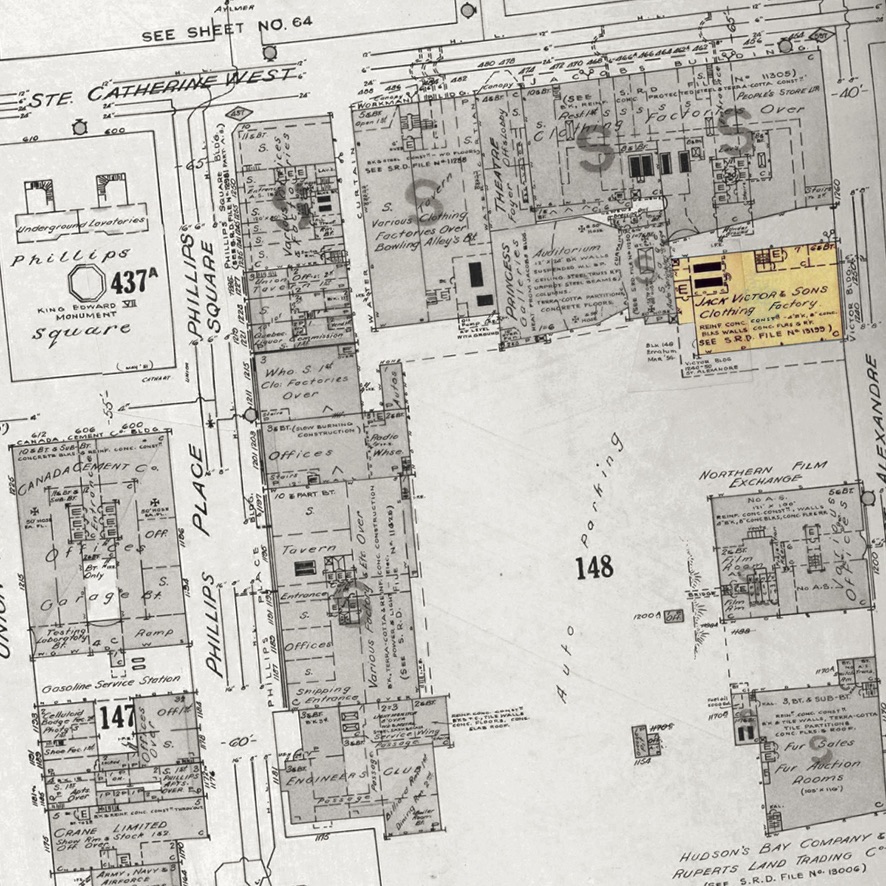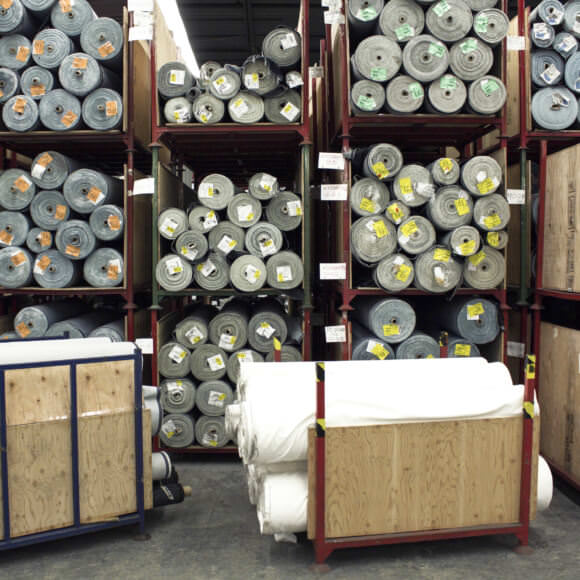A family-run suit-making firm in operation for over 110 years, Jack Victor originated when a Romanian immigrant of the same name arrived in La Tuque, Quebec, in 1907 at the age of 20, and began selling clothing door-to-door from a pack on his back. La Tuque was a junction on the expanding railroad and Victor’s client base grew along with the town. Within a few years, he had opened a small storefront in the only hotel, which became very successful. Selling furnishings and footwear in addition to clothes, he soon opened branches in the Quebec towns of Montmagny, Drummondville, and Cobalt, as well as Elk Lake in Ontario.
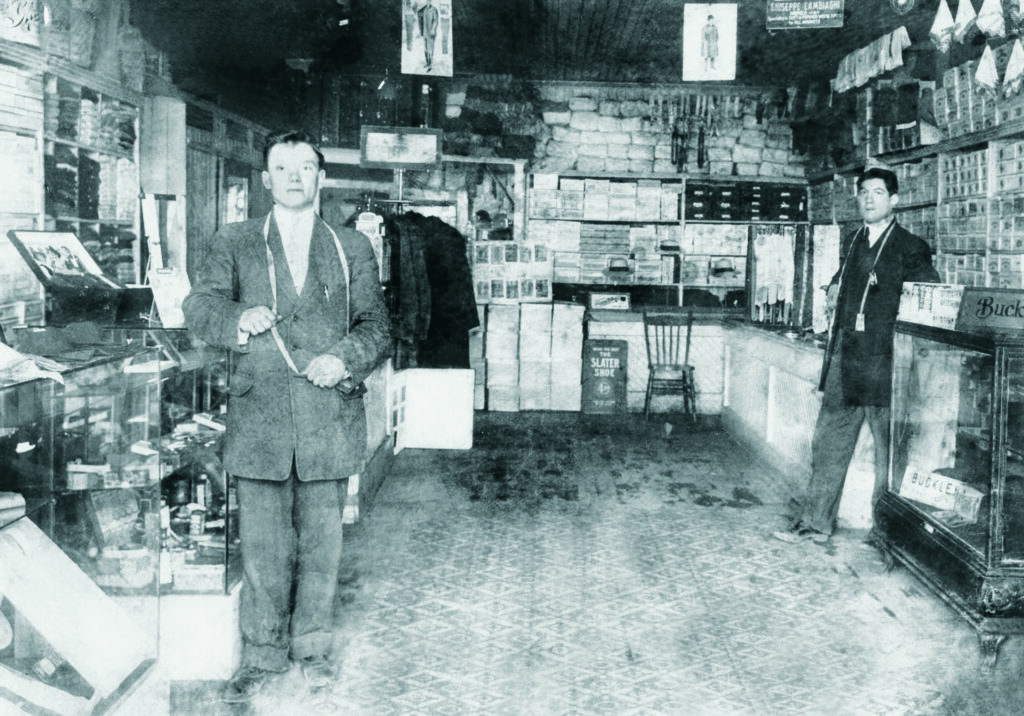
Photo courtesy of Jack Victor Ltd.
Frequently travelling as far south as Montreal to meet with suppliers and clients, Victor met his future wife in the city and decided to take a job as a salesman with the Royal Brand Clothing Company in order to settle there. Even during the Great Depression, Victor continued to enjoy success across Canada, and the company made him a partner. While in that role, he introduced a bespoke division, produced clothing for the military during the Second World War, and developed a product dubbed the ‘Alpacama’ coat—lightweight outerwear made with alpaca and llama wool.
In 1947, Jack Victor’s partners in the Royal Brand Clothing Company passed away and he bought their shares from their estates. Becoming sole owner, he changed the company’s name to Jack Victor & Sons Ltd., as his sons Herschel and Arthur had joined him in its operations.
The 1950s were a decade of significant growth for Jack Victor. A 35,000-square-foot building for his factory and company headquarters was built on St. Alexander Street in downtown Montreal. Though other clothing manufacturers were building their facilities north of the city’s core, Victor wished to remain accessible to customers and department store clients. During this period, the company shifted its focus slightly from coats to suits, introducing a new line of menswear under the Shipley label. The line was quite successful upon its launch, thanks in part to the hiring of entertainer Bob Hope to promote it.
In 1958, Jack Victor passed away and his sons, then in their 30s, took over the company. Herschel and Arthur oversaw a time of booming domestic production and much competition within the menswear market in Canada. They met the moment with flexibility, adapting to the trends that were then sweeping popular culture, including the narrow suiting of the London-inspired mod look, which then gave way to the “dandified” styles of the 1970s—double-breasted jackets, three-piece suits with wide collars and lapels, bellbottoms, and colourful ties.
Although Jack Victor & Sons was able to expand production throughout the 1970s, foreign competition was beginning to weaken the Canadian manufacturing sector in general. The company attributes its survival and prosperity in this period to “conservative management” and a “reputation for excellent value.” In 1982, it launched an additional line of suits and outerwear under the Savile Row label (capitalizing on the association with British tailoring) and collaborated with the English brand Aquascutum.
The firm’s penetration into the US market continued as the US-Canada Free Trade Agreement in 1988 (which became NAFTA in 1994) caused the US dollar to fall in relative value. Under the Jack Victor label, the company could sell its own collections in the United States, emphasizing suits and sport coats in the fine Italian fabrics preferred by that market. In 1994, it was able to open its first US showrooms and sales office, continuing to expand its position in department and specialty stores; by 2011, 70% of the company’s business would be done Stateside.
The 1990s saw continued recognition and promotion of the brand, with the company receiving the 1996 Griffe d’Or award for outstanding men’s clothing manufacturer in Quebec in a televised ceremony.
To increase its media presence, Jack Victor hired major sports stars from the worlds of baseball, motor sports, and football for print advertising campaigns. With Herschel Victor’s son Alan having returned from California to Montreal to join the family business, the Jack Victor brand was ready for its next iteration under the guidance of a new generation.
Herschel passed away in 2011 after 64 years with the company, having become known as “the dean of the North American tailored clothing industry” not only for his extensive knowledge and connections within the business, but also for his exemplary philanthropy, particularly in the fields of health care and education. At the time of his passing, he had received the Order of Canada, the Governor General’s medal, and honours from his alma mater, McGill University.
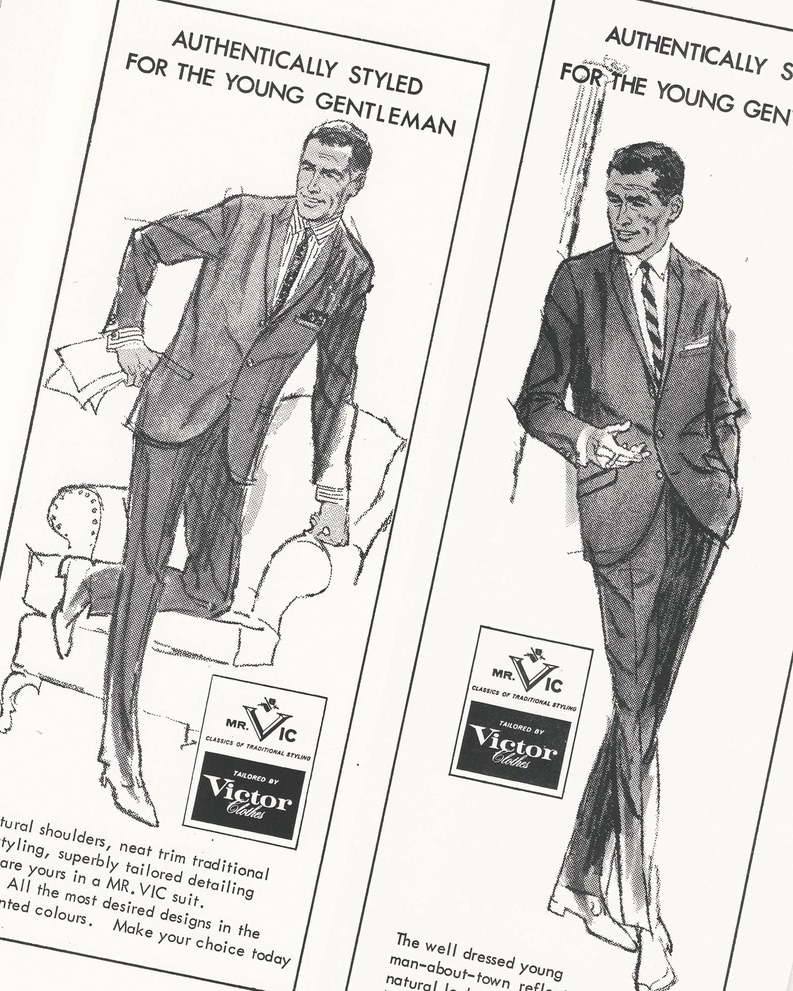
Photo courtesy of Jack Victor Ltd.
Throughout the 2000s, the company’s growth continued, largely thanks to the acquisition of smaller brands, including Riviera Trouser and David Donahue, and licensing partnerships with other larger companies, notably Ted Baker and Montreal designer Robert Barakett. It savvily adapted its offerings in accordance with existing markets for these brands, and managed to grow enough to purchase a second and third manufacturing facility in Montreal and employ as many as 1000 people.
Celebrating the firm’s centennial year in 2013, executives explained its longevity was due to a mix of the Old World traditions of skilled Jewish immigrants to North America who brought with them the values of European tailoring, and the modern technology and facilities available to it in Montreal as part of the North American manufacturing community.
During Alan Victor’s tenure, the company has focussed on developing its offerings into what he has called a “full lifestyle collection,” meaning that it has continued to add new garment categories like jersey knits, suede jackets, printed sport shirts, and five-pocket pants. It has sought out and hired executives from successful companies, including Michael Kors, and has balanced its core business of suits with more casual lifestyle items that have gained in popularity, particularly since the Covid-19 pandemic.
Still proudly manufacturing in Montreal, it also offers made-to-order options via a small number of high-end retailers and in 2022 launched an e-commerce site.
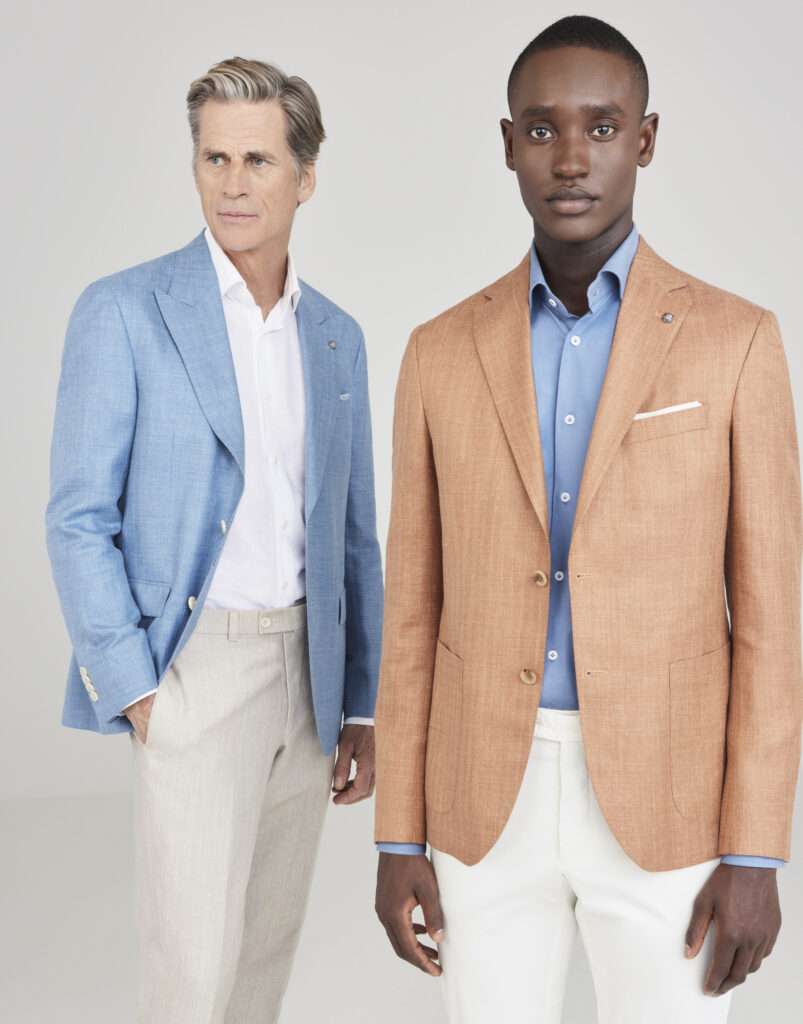
Photo courtesy of Jack Victor Ltd.
Sources
Hustak, Alan. “Herschel Victor found success sticking to the classics.” The Globe and Mail, May 31, 2011. External link
Maglio, Diane, Elliot C. Travalino, and Mathias Vestergaard. One Hundred Years, Jack Victor: Our Story and the World of Men’s Tailoring, 1913-2013. Montreal: Jack Victor Limited, 2014.
Palmieri, Jean E. “The Transformation of Jack Victor on Eve of 110th Anniversary.” WWD, Sept 19, 2022. External link
jackvictor.com External link
Publication date
01/10/2004
Writing
Dicomode
Revision
Laura Snelgrove




